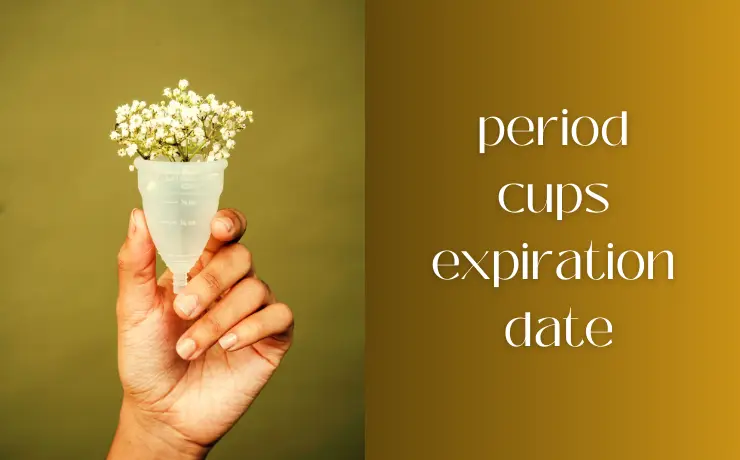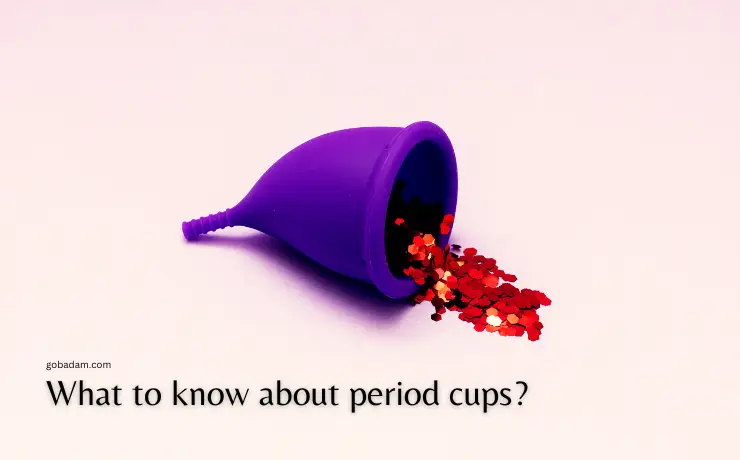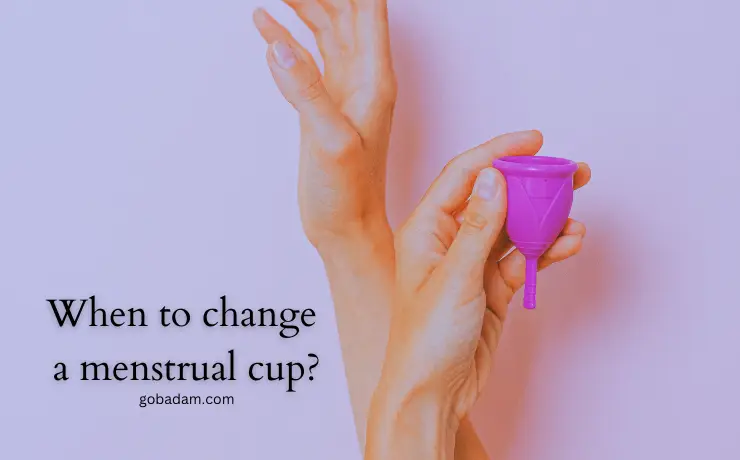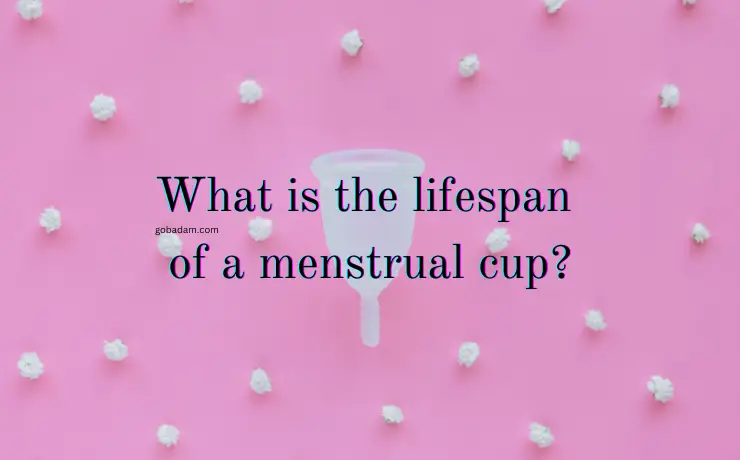Do menstrual cups expire? Now, this is a question that I’ve been asked numerous times, and it’s an important one. Previously, we discussed the question, “Do panty liners expire?” Now, we’re going to closely examine a product that has been increasingly popular in recent years: Period cups. These are more eco-friendly but also subject to ongoing health debates.
SEE OFFER 👉🏻 menstrual cup set
How about embarking on an informative and enjoyable journey, exploring the pros and cons, tips to extend their lifespan, and other essentials you should know about reusable period cups? Let’s dive in.
Do menstrual cups expire? (Can menstrual cups go bad?)
The short answer is yes, but the lifespan largely depends on the material quality and how well you maintain the cup.
Reusable menstrual cups can lose their functionality one day. However, unless there’s a defect from the manufacturer or an error on the user’s part, this won’t happen in the short term.
Menstrual cups are usually made from medical-grade silicone, rubber, latex, or elastomer, and can last anywhere up to 10 years. However, let me underline that the duration can significantly vary based on usage, cleaning methods, and even the pH levels of your body.

How long do reusable menstrual cups last?
Reusable period cups can last anywhere from 2 to 10 years on average. Many varieties affect their lifespan. Let’s take a detailed look.
Reusable menstrual cups reviews are very diverse and change from person to person. However, one of the main significant things is the material of period cups. The lifespan of a reusable menstrual cup largely depends on the material it’s made of, how frequently it’s used, and how well it’s maintained.
Here are some factors to consider:
- Material Quality: Most menstrual cups are made of medical-grade silicone, but they can also be crafted from thermoplastic elastomer (TPE), rubber, or latex. Silicone and TPE generally have longer lifespans compared to rubber or latex.
- Usage: If you have more than one menstrual cup and rotate their use, they might last longer. Cups used more frequently might show signs of wear earlier than those used less often.
- Maintenance and Care: Proper cleaning, storage, and handling can significantly extend the lifespan of a menstrual cup. Always follow the care instructions provided by the manufacturer. Avoid using strong chemicals or abrasive cleaning tools, as these can degrade the material more quickly.
- Storage: Storing the menstrual cup in the breathable cotton bag often provided by manufacturers, rather than a sealed plastic bag, will help in maintaining its integrity. It’s crucial to let the cup air out between cycles.
- Physical Changes: Your body and menstrual flow can change due to factors like childbirth, surgery, or significant weight shifts. These changes can affect the fit and comfort of your menstrual cup, and you might need to replace it with a different size or brand even if the cup itself is still in good condition.
- Wear and Tear: Even if a menstrual cup is expected to last for years, regularly inspect it for signs of damage such as cracks, tears, stickiness, or any significant change in texture. These are indicators that it’s time for a replacement.
Always prioritize comfort and hygiene. If you ever doubt the integrity of your menstrual cup, even if it hasn’t reached its typical lifespan, it’s better to invest in a new one for your health and peace of mind.
What to know about period cups?
Here is some useful information about period cups. You can find their benefits, side effects, cleaning, and storage tips.

Menstrual Cup Benefits
The benefits of using reusable menstrual cups are multi-faceted, ranging from economic to environmental and health advantages. Firstly, they’re cost-effective; one cup can last for several years, significantly reducing the recurring expense of disposable products.
Secondly, they are eco-friendly, helping to diminish the waste that comes from traditional pads and tampons. Menstrual cups also boast a longer wear time, allowing for up to 12 hours of use, thereby offering greater convenience and freedom in daily activities.
Moreover, they are made from medical-grade materials that are less likely to cause irritation or toxic shock syndrome, making them a safer choice for menstrual hygiene. In summary, reusable menstrual cups are an economically savvy, environmentally responsible, and health-conscious alternative to disposable menstrual products.
Menstrual Cup Side Effects
While menstrual cups are generally considered safe and effective, some users may experience side effects such as vaginal irritation, discomfort during insertion or removal, and occasional leakage.
In rare cases, there may be an increased risk of urinary tract infections (UTIs) or toxic shock syndrome (TSS), although the latter is significantly less common with menstrual cups compared to tampons. It’s essential to follow the manufacturer’s guidelines for cleaning and usage to minimize these risks.

How often should a menstrual cup be changed? (during period)
A menstrual cup should typically be emptied and cleaned every 6 to 12 hours, depending on your flow and the cup’s capacity. Always refer to the manufacturer’s guidelines for specific recommendations.

How to clean a menstrual cup?
Cleaning a menstrual cup is essential for maintaining hygiene. Here’s a step-by-step guide:
- Empty the Cup: First, always empty the contents into a toilet or sink.
- Rinse with Cold Water: Start by rinsing with cold water to prevent blood from settling into the silicone which can cause staining.
- Wash with Warm Water and Mild Soap: Use a mild, unscented, water-based (oil-free) soap to gently clean the cup. Ensure there are no residues left, as they might cause irritation.
- Clean the Holes: The tiny holes near the rim can get blocked. Clear them using water or a toothpick.
- Boil for Sterilization (Periodically): At the end of each menstrual cycle, boil the cup in water for 5-10 minutes to sterilize it. Ensure the cup doesn’t touch the bottom of the pan, which can cause it to melt or warp.
- Dry and Store: After cleaning, allow the cup to air dry completely. Store it in a breathable pouch or container until your next cycle.
Remember 👀👉🏻Avoid using vinegar, alcohol, tea tree oil, or harsh chemicals on your menstrual cup, as these can degrade the material. Regular inspection for damages or wear is crucial for ensuring its continued safety and efficacy.
How to store a menstrual cup after a period?
Proper storage of your menstrual cup after a period is crucial to maintain its integrity and longevity. Here are the key steps:
- Sterilize the Cup: After your cycle is complete, sterilize your cup by boiling it in water for 5-10 minutes. Make sure that the cup is fully submerged and does not touch the bottom of the pot, as this could cause melting or warping.
SEE OFFER 👉🏻 menstrual cup sterilizer
- Let It Air Dry: After boiling, place the cup on a clean, lint-free towel and let it air dry completely. Avoid drying with a towel directly, as lint may adhere to the surface.
- Check for Damage: Before storing, inspect your cup for any signs of wear, tear, or material degradation such as cracks or stickiness.
- Breathable Storage: Use the breathable cotton pouch usually provided by the manufacturer or any other breathable container like a cotton bag. Avoid sealing the menstrual cup in an airtight plastic bag or container, as lack of air can promote bacterial growth.
SEE OFFER 👉🏻 menstrual cup storage bag
- Keep it in Cool, Dry Place: Store the menstrual cup in a cool, dry, and dark place away from direct sunlight, which could degrade the material over time.
- Avoid Mixing: If you own more than one cup, it’s a good idea to store each in its own separate pouch to prevent possible cross-contamination or material reactions between different types of cups.
By following these steps, you ensure that your menstrual cup remains in optimal condition for your next cycle, thereby safeguarding both your health and your investment. Cleaning, caring, and storage have very important roles in order to prolong your menstrual cups.
Is my menstrual cup too old? Let’s see when to replace period cups and obvious signs for this.
How often should you replace your period cup?
You should always look for signs of wear and tear like rips, changes in texture, or stickiness as indicators that it’s time for a replacement. For optimal performance and to ensure your health isn’t compromised, be vigilant about the care and timely replacement of your menstrual cup. It’s not just about sustainability; it’s also about your well-being.

5 signs that you should replace your menstrual cup
Material Degradation: If you notice that the medical-grade silicone, rubber, or elastomer has started to deteriorate—becoming sticky, overly flexible, or even crumbling—you should replace your menstrual cup immediately. This is a clear sign that the material has weakened and can no longer maintain a reliable seal.
Discoloration or Odor: While some discoloration over time can be considered normal, significant changes in color, especially dark stains that don’t go away after thorough cleaning, could be a red flag. Persistent odor, even after proper sterilization, is another signal that your cup needs replacement.
Cracks, Holes, or Tears: Any form of damage to the cup’s structure such as small cracks, holes, or tears can compromise its functionality and can also be a breeding ground for bacteria. This not only affects the cup’s performance but also puts you at risk of infection.
Changes in Texture: If you feel the texture has changed, becoming either too soft or too hard, it may indicate that the material is losing its integrity. A cup that’s too soft may not open properly and create a good seal, while a cup that’s too hard may cause discomfort or even injury.
Allergic Reactions or Irritation: If you suddenly start experiencing discomfort, irritation, or allergic reactions when using your menstrual cup, that could be a sign that the material has degraded and is no longer safe for use. Do not ignore any new or increased discomfort; instead, replace the cup right away.
If you notice any of these signs, don’t hesitate to invest in a new menstrual cup.
Before purchasing a new menstrual cup, make sure you dispose of the old one.
How to dispose of a menstrual cup?
Proper disposal of a menstrual cup is both an environmental responsibility and a health concern, so let’s discuss the most effective and ethical ways to go about it.
- Boil the Cup: Before disposing of your menstrual cup, it’s advisable to sterilize it. Boil it in water for around 5-10 minutes to ensure that all bacteria are killed.
- Cut into Pieces: To make the cup more manageable for disposal, cut it into smaller pieces using clean scissors. Make sure to handle the cup carefully to avoid injury.
- Biodegradable Bag: Place the cut pieces into a biodegradable or compostable bag. This step is crucial if your cup is not made of biodegradable material, as it helps minimize its environmental impact.
- Dispose in Household Waste: If your local waste management does not have a specialized disposal option for menstrual products, you can dispose of the bagged cup in your regular household waste. It is not suitable for recycling due to hygiene reasons.
- Specialized Disposal Services: Some municipalities or healthcare facilities offer specialized disposal services for medical or personal hygiene products. Check with local resources to see if this is an option in your area.
- Incineration: If you have access to medical waste incineration facilities, this is an effective way to dispose of the cup while minimizing its environmental impact.
- Composting: Only consider this option if your menstrual cup is made from 100% organic, biodegradable material. Even then, be sure to research or consult with composting experts to ensure this method is appropriate for your specific type of cup.
- Consult Manufacturer Guidelines: Many menstrual cup companies offer guidelines on how to responsibly dispose of their products. This information can often be found on the packaging or the company’s website.
- Consider Upcycling: While not a disposal method, some creative individuals have found ways to upcycle their old menstrual cups into non-hygienic items, such as small planters for succulents.
Remember, improper disposal can result in both environmental damage and potential health hazards. Take the extra steps to dispose of your menstrual cup responsibly. Your due diligence goes a long way in contributing to a healthier planet and a safer community.
PURCHASE 👉🏻best period cup
Frequently Asked Questions About Can Period Cups Go Bad?
Here I gathered up some top asked questions and answers about menstrual cups and their expiry dates.
Do menstrual cups have an expiration date?
Menstrual cups don’t come with a specific expiration date, but they do have an estimated lifespan which is typically between 2 to 10 years. This duration largely depends on the material of the cup, usage frequency, and proper maintenance.
How can I tell if my period cup is going bad or needs replacement?
Signs that your menstrual cup might be going bad include material degradation (like becoming sticky or overly soft), noticeable discoloration or persistent odor even after thorough cleaning, any form of damage such as cracks, tears, or holes, or experiencing discomfort when using a cup that used to fit well.
Does the effectiveness of menstrual cups diminish over time?
While a well-maintained menstrual cup can remain effective for years, wear and tear from regular use might slightly alter its shape or flexibility over time. If the cup doesn’t seal properly or starts to leak, despite being inserted correctly, it might be an indication that its effectiveness is diminishing and might need replacement.


